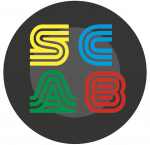
Evaluation Techniques and Six Thinking Hats
Prior to coming to the SCA, I had this idea that creativity happened in a vacuum. In my mind, creative people effortlessly came up with innovative ideas; they went from A to Z at the speed of light. As this was far from my case, I was terrified of starting at the SCA. I was pleasantly surprised to find that our first four weeks were packed with classes on creative techniques. Many of the master classes thus far, including Mark Palmer’s class on the 4 R’s, have helped demystify the creative process for me. Marc’s master class on Evaluation Techniques was one of the most useful thus far.
Marc began by proposing we use the feedback framework Notice/Wish/Wonder throughout the year, which roughly breaks down into:
- Notice: let the person know what you notice about their work. Observe what stands out (whether for good or for bad). Be specific. Don’t generalise.
- Wish: try to only share constructive suggestions on how the person might improve the work. Try to point people in a direction, rather than telling them what you want the work to be like.
- Wonder: Ask questions. Get your the person to ponder. Where else can the work be taken? How can it reach more people? What would happen if…?
I was pretty relieved to be introduced to the Notice/Wish/Wonder framework – or, as Marc put it, the antidote for the ‘bullshit sandwich’ – ahead of future feedback sessions. I was also pleasantly surprised that Marc urged us to be specific and avoid generalisations. As someone who tends to notice small details before the bigger picture, I was hesitant to share very detail-oriented feedback out of fear that it was unhelpful in moving the work along. By combining Notice with more ‘open’ categories such as Wish and Wonder, however, the framework makes space for both specific and more broad feedback.
We then moved on to the Six Thinking Hat Strategy proposed by Edward de Bono. In summary, there are six metaphorical hats of different colours which can be used when solving a problem. In a group setting, every member must wear the same hat at the same time, so that a meaning discussion can take place. The six hats are the following:
- White: the facts hat. What information could help the group tackle the problem? Figures, information, truth, data, stats.
- Red: the intuition hat. When wearing it, you are allowed to think with your gut, expressing your feelings without a rational explanation.
- Black: the caution hat. What could go wrong? What are the weak points of this idea? What are the risks? How can we avoid and counter them?
- Green: the creative thinking hat. What if? Where else can we go?
- Yellow: the optimistic hat. What opportunities are lying our way?
- Blue: the project manager hat. What are the deliverables?
As Marc explained, we all have a favourite and a least favourite hat. We should also never try to wear the same hat for longer than two minutes. Upon reflection, I think my favourite is a match between white and black (how boring do I sound), whilst my least favourite is probably blue, although I definitely see its importance.
Following Marc’s advice and having a twenty-minute Six Hat session about our Supermarket brief cleared any doubts my group might have had about the usefulness of this technique. Sticking to two minutes per hat, our discussions ran much more smoothly as we were all “wearing” the same hat at the same time, with all other hats being off limits. This allowed us to throw around as many ideas as possible when wearing the green and yellow hats, without stopping the evaluate each and every one. It also made it very easy for anyone to raise concerns or gut feelings about the ideas at hand, as when wearing the black and red hats we had an allocated time to do so. We lagged behind slightly when it came to applying the Six Hats technique to every single stage of the creative process – once we had a product idea, we rushed to finalise the different elements of the project. This will definitely be something I avoid doing in my next projects.










